
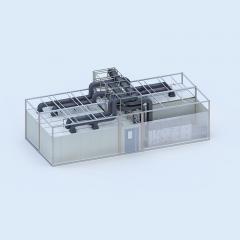
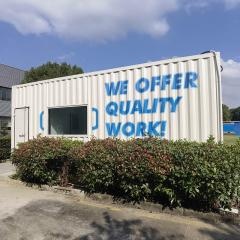
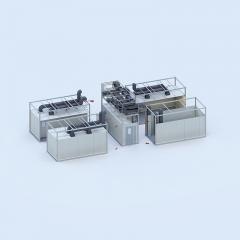
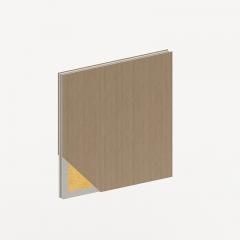
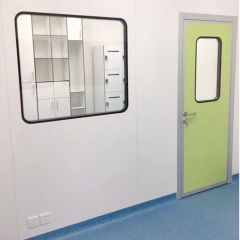
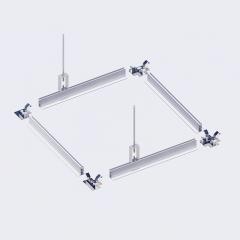
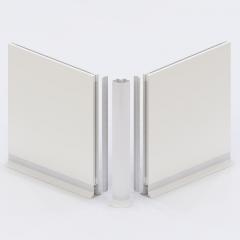
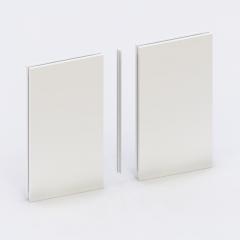
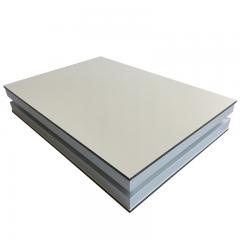
At present, there is a great demand for polyurethane sandwich panels in the market, but the huge market for polyurethane sandwich panels is mixed, and the quality of polyurethane sandwich panels is uneven, resulting in the price of polyurethane sandwich panels being also different, but many customers come up to ask how much polyurethane sandwiches are. I. Influencing factors of the lowest price per square meter for polyurethane sandwich panels: fire protection grade of core materials Polyurethane composite panel is divided into three grades: B1, B2 and B3. The amount of black material is the key factor to determine the fire protection level of polyurethane composite board. The more the amount of black material used, the higher the fire-proof grade of polyurethane composite board; conversely, the lower the fire-proof grade of polyurethane composite board. Prices of different fire prevention grades are also different. The higher the fire prevention grade, the higher the price. 2. The Influencing Factors of the Minimum Price of Polyurethane Composite Plate for One Square Meter: Upper and Lower Steel Plates Polyurethane sandwich panel has two layers of steel plate. The price of upper and lower steel plate is affected by thickness,PU sandwich panel manufacturer, galvanized content and other factors. The higher the requirement of upper and lower steel plate, the higher the price will naturally be. 3. Influencing factors of the lowest price per square meter of polyurethane composite board: specification of polyurethane sandwich Polyurethane sandwiches have a width of 500 mm to 1000 mm, a thickness of 50 mm, 75 mm, 100 mm, 120 mm, 150 mm and so on. The price varies with the specifications. 4: Influencing factors of the lowest price per square meter of polyurethane composite board: others Affected by core material, upper and lower steel plates and specifications, processing fees, accessories and so on are also part of the factors affecting prices.
Clean room steel doors are widely used in clean engineering fields, such as electronic, biological, pharmaceutical, hospital, food, military, aviation. With a very wide range of applications, it is a new type of sheet metal, which is deeply trusted by customers. Characteristic of cleanroom steel door: 1. A stainless steel anti-collision belt is installed on the waist of the door fan to prevent accidental collision of the cart to damage the surface of the door. 2. SUS304 stainless steel is selected as the edge-wrapping material of the door frame. There is no stress connection around the edge of the door and the door is strong and durable. 3. The medical airtight door is stable, convenient, safe and reliable, which can meet the special requirements of airtight, sound insulation and intelligence. 4. The power beam is made of aluminum alloy profiles. Its unique V-shaped track and circular groove design meet the sealing requirements when it is closed. The overall structure is reasonable and reliable. 5. Rubber seals are installed on all sides of the door pages, filling the gap between the door pages and the door frame. The airtightness is excellent, which can prevent dust and bacteria, reduce air leakage and ensure the gradient distribution of air pressure difference between adjacent rooms. 6. The door frame and the wall remain the same plane, which is more beautiful, and full of integrity. Three neighbors are installed with a seal, and the bottom of the door is equipped with sweeping strips, in line with the use of health requirements of all walks of life. 7. The door is surrounded by an aluminum-gold frame structure. The surface of the cleanroom steel door is made of stainless steel wire drawing panel or high-quality aluminum alloy panel or aluminum-plastic panel or fire-proof panel by high-voltage electrostatic spraying. The inner sandwich is made of injection polyurethane foaming technology. The door panel is the firm, flat and elegant. Cleanroom steel door material: cold-rolled steel panel. Production: The door frame is made of SPCC 1.5mm and the door plate is made of SPCC 1.0mm. Doors and windows (conventional: 400*600) are double-layer toughened glass (right angle window, arc window, outer inner circular window) The core material of the door panel is flame retardant paper honeycomb, and the surface adopts electrostatic spraying treatment (color according to customer requirements). Accessories: Stainless steel hinge, automatic lifting bar, door closer, hardware accessories, split lock, etc.
The importance of building decoration in clean rooms industry mainly manifested in the following two aspects: (1) The impact on comprehensive performance: clean room requires no dust production, dust-free structure, tightly sealed and dustproof. So the decoration of the clean room will directly clean the effect. (2) Influences on cost: Compared with general office buildings, clean rooms are high-cost buildings. Requirements for decorative materials 1. General requirements Smooth surface; The surface has wear resistance; Good thermal insulation; It is not easy to generate static electricity. No moisture absorption, no moisture permeability; Good sound absorption; Easy to process; The surface is not easy to adhere to dust; It is easy to remove the attached dust. The price is cheap. 2. Decoration of the ground (1) General requirements Abrasion resistance; corrosion resistance (acid, alkali, medicine); Antistatic; Fourth, skid resistance; Seamless processing; Easy to clean. (2)Species Double floor The general characteristics are: the ground of a typical vertical one-way flow clean room. The general features are: ground air return, good air permeability, high cost, poor elasticity. Terrazzo floor The general features are: smooth, not easy to dust, good integrity, washable, anti-static, no elasticity. Paint floor The general features are: with the advantages of terrazzo, wear resistance, good sealing, elasticity, complex construction. Material: It is made of epoxy resin, polyester resin and polyurethane resin by adding pigments and hardening agent. The cement label of cement mortar base is no less than 425 #. Coiled sheet floor The general features are: smooth, wear-resistant, slightly elastic, not easy to dust, easy to clean, simple construction, easy to generate static electricity, easy to aging by ultraviolet radiation, because different from concrete expansion system, easy to shell in large areas. Acid-resistant magnetic plate ground The general features are: corrosion resistance, but brittle quality can not withstand impact, complex construction, high cost, suitable for areas with corrosion resistance requirements, and appropriate to use water retaining line enclosure. FRP Floor The general features are: corrosion resistance, good integrity, but the expansion coefficient is different from the base, so it is suitable for small area use, and use fire-resistant varieties. 3. wall surface (1) General requirements Not dirty, easy to clean; Smooth surface; No dust is produced once the surface is peeled off or damaged. Impact resistance; The corner can be treated with arc material or sealing material. (2) Species Advanced plastering Wonzone is one of the best clean room panel suppliers in China providing high quality products, welcome to make an order.
The "China Clean Room Engineer" training was organized by the Clean Technology Branch of the Chinese Electronics Society, the Clean Room Technical Committee of the China Refrigeration and Air Conditioning Industry Association, and the Guangdong Clean Technology Industry Association held from December 27th to 29th, 2018. The training invited authoritative experts in the domestic clean room technology industry, professors Wang Yao, Zhang Liqun, and Cai Jie to give lectures. China's clean room engineer qualification certification is different from China's current technical title evaluation. It is a new technology evaluation system that adopts the internationally popular industry access system. Since 2008, China's clean industry is in line with international standards, and the qualifications of clean room engineers will be recognized internationally. The clean room engineer certificate is a certificate of personal professional and technical qualification level, which is the basis for professionals to engage in the work and application of the clean room industry and Pharmaceutical engineering and is universal across the country.
Polyurethane sandwich panel is a high-end product in metal building materials nowadays. The reason why it is high-end is that polyurethane sandwich panel integrates load-bearing, heat preservation, fire prevention and waterproofing. It is non-toxic, tasteless and does not need secondary decoration. It can be said that the polyurethane sandwich panel is the "all-round player" in the composite plate. Polyurethane sandwich panel can have so many functions, in fact, most of the credit is due to its core material, and the quality of polyurethane sandwich panel core depends on the quality of raw materials. Next, I will introduce to you the brand of polyurethane sandwich panel core material. The core material of polyurethane sandwich panel is foamed with black and white materials. The four major giants of polyurethane black and white materials in the world are Bayer, Basf, Dow and Hengsman in Germany. Hengsman is widely used and recognized as the raw material of polyurethane sandwich panel. The quality of black and white materials depends on the formula of major companies. Friends who have used the polyurethane sandwich panel made from Huntsman as raw material should know that this kind of polyurethane sandwich panel is very stable, less affected by temperature, and has very good thermal insulation and fire protection effect. It is much higher than the polyurethane sandwich panel made from other brand materials. This is the advantage of good brand materials. More importantly, high-quality raw materials will adjust the formulation of black and white materials according to the different seasons. Take Huntsman as an example, the ratio of raw materials will be adjusted four times a year in order to adapt to seasonal economy and ensure that the produced polyurethane sandwich panel is more stable and of better quality in clean room sandwich panel. We are the Clean room sandwich panel supplier.Welcome to inquiry.
Clean Room Panels Market: Drivers and Restraints Clean rooms system has increased in almost every type of industry where small particles are likely to affect the manufacturing process. Because of increasing standardization, stringent healthcare regulations, demand for quality product, demand for quality product, growing prevalence of contagious and infectious diseases, many companies are looking to install cleanrooms in their facilities. The main hindrance to the clean room technology is huge financial inputs required for installation and the maintenance of clear room premises. Clean Room Panels Market: Overview Clean rooms are nowadays not only limited to high tech manufacturing or laboratories but improvisation in quality control parameters, maximizing product yield and ensuring safety in companies and laboratories increasing emphasis on clean room infrastructure. The variation occurs according to size and complexity of the material used and the application it is used for. Increasing research and development activities in almost every field such as pharmaceuticals engineering, semiconductor technology, nanotechnology, biotechnology, military/defence and others fuels its market. With the increase in the market of cleanroom panels, other markets such as consumables and various parameters controlling devices also surges. Clean Room Panels Market: Region-wise Outlook Geographically, clean room panels market is classified into regions viz. North America, Latin America, Western Europe, Eastern Europe, Asia-Pacific excluding Japan, Japan, Middle East and Africa. North America and Western Europe are the key markets for Clean Room Panels products because of good infrastructure facilities available in these countries and a number of quality control rules are followed for manufacturing and research purpose. The fastest growth can be seen in Asian Countries because of the increase in panel manufacturing and installation services in these countries. Large number of industrial installed base in these countries also adopting the technology for improvisation in quality control parameters. Thus, a huge opportunity in these regions can be seen for the clean room panels market to prosper.